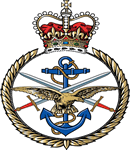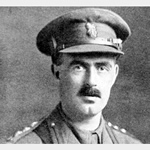Commemorated: | |||
| 1. Memorial: | Walton And Weybridge (Walton-On-Thames) Cemetery | Screen Wall. 412. | |
| 2. Memorial: | The (1940) Scroll - WW1 Roll of Honour | 25C GQS | |
| 3. Document: | New Zealand WW1 Masonic List | N.Z. | |
Awards & Titles: | Companion of The Most Honourable Order of the Bath Companion of The Most Distinguished Order of St. Michael & St. George Croix de Guerre (France) | ||
Family :
Son of Alexander and Katherine Begg, of Dunedin; husband of Lillian H. L. Begg, of 1, Claremont St., Dunoltar, Dunedin.Service Life:
Campaigns:
- The First World War 1914-1918, World-wide.
| Unit / Ship / Est.: New Zealand Medical Corps |
Mike: BEAN FieldAntbulance, 357, 358, 376 |
| Action : Post War |
Post War includes all operations in all theatres up to 31st August 1921. This excludes the campaign in Russia against the Bolsheviks. It also includes men who succombed to wounds post war and who died from various causes whilst still in the services but post war.
Detail :
Charles Begg was New Zealand's most decorated member of the Medical Corps during the First World War. Born in Dunedin in September 1879, he attended Kaikorai School and Otago Boys' High School before studying medicine at the University of Otago Medical School in 1898. He graduated with distinction from the University of Edinburgh in 1903. He became an MD in 1905 and the following year returned to New Zealand, where he went into general practice in Wellington. In December 1909 he married Lillian Treadwell. The couple had two sons. With the outbreak of the First World War Begg was appointed to command the New Zealand Field Ambulance. The Field Ambulance arrived in Egypt in December 1914. Stationed at Zeitoun, it saw its first action during a Turkish attack in early February 1915. There were few casualties to deal with in this exchange. All of this was about to change when they departed for Gallipoli on 17 April 1915. When the Anzacs landed on 25 April, casualties were unexpectedly heavy. Begg sent his bearer sections ashore while his surgical teams provided treatment on various ships. As the casualties built up many did not get the surgery they needed. On 28 April Begg dug in a dressing station on the beach, where surgeons worked despite being under constant fire. In late June the station was destroyed by a Turkish shell. Begg was wounded but relocated his depleted unit further along the beach. By early August over 15,000 wounded Anzacs had been treated at this one dressing station. The workload after the assault on Chunuk Bair in early August became almost impossible to cope with. Hundreds of men lay unprotected on the beach. Begg appealed directly to his superiors and infantry units arrived to help the bearers. The navy resumed its barge transport for the wounded. By 13 August the beach had been cleared. At this point Begg contracted paratyphoid fever and was evacuated to a hospital ship. After a short break in England to convalesance he returned to Gallipoli in early November. He helped in the preparations for the successful withdrawal of Allied soldiers shortly before Christmas 1915. Attention now turned to the Western Front where the New Zealand Division arrived in April and May 1916. Respiratory and enteric diseases, infectious fevers, venereal disease, scabies, trench foot and battle fatigue were some of the wider medical problems facing the Medical Corps. The appalling conditions experienced during the battle of the Somme in September and October 1916 posed a particularly severe test. In October 1916 Begg became deputy director of medical services II ANZAC Corps. Emphasis was placed on improving the general health of the troops through better food, accommodation, health education, immunisation, sanitation and counselling. Despite a severe winter the condition of the men improved. At Passchendaele in October 1917 the muddy conditions made it impossible to use wheeled vehicles. Teams of six bearers spent up to seven hours battling knee-deep mud to carry the wounded anywhere between 3 and 5 kilometres to a dressing station. By mid-1918 troops were hit by the first wave of the influenza pandemic. Begg was now given the added responsibility of caring for wounded from the French Fifth Army. For this he was honoured with the highest order of the Croix de Guerre by the French president. He received numerous other honours for his service, including Companion of the Most Honourable Order of the Bath (CB), Companion of the Most Distinguished Order of St Michael and St George (CMG). He was also Mentioned in Dispatches (MiD) on three separate occasions. At the end of November 1918 Charles Begg returned to London as director of medical services. He was reunited with his wife and sons but it was to be a brief reunion. He developed influenza in January and died from acute pneumonia on 2 February 1919. He was buried with full military honours in Walton-on-Thames three days later. He was awarded the C B, C M G, Croix de Guerre (France). He was a Past Master of his lodge.
Masonic :
| Type | Lodge Name and No. | Province/District : |
|---|---|---|
| Mother : | Wellington No. 1521 E.C. | New Zealand (North Island) |
Initiated | Passed | Raised |
28th February 1907 | 22nd April 1907 | 24th October 1907 |
MDCB PM
Source :
The project globally acknowledges the following as sources of information for research across the whole database:
- The Commonwealth War Graves Commission
- The (UK) National Archives
- Ancestry.co.uk - Genealogy, Family Trees & Family History online
- ugle.org.uk - The records of the United Grand Lodge of England including the Library and Museum of Freemasonry
Additional Source:
- Founder Researchers : Paul Masters & Mike McCarthy
- Researcher : Bruce Littley

